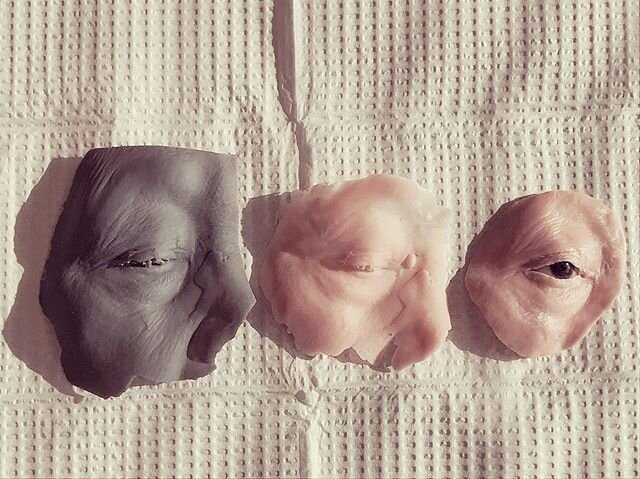Smriti Malhotra
In the field of medicine, there is a branch that combines both fine arts and medical skills to craft body parts that are both aesthetically pleasing and functionally realistic. This innovative and intricate medical art form is called Anaplastology. It has been carving a niche for itself in the field of medicine, with its ability to recreate lost or damaged body parts with the use of cutting-edge technology and a masterful touch of artistry. This article will delve deeper into the field of anaplastology, its significance, and the role of anaplastologists in transforming the lives of individuals in need.
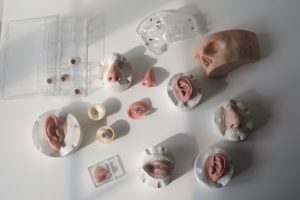
Anaplastology is a highly specialized field of medical science that involves the creation of prosthetic body parts that are custom-made to fit the unique needs of each individual. This field is particularly useful for individuals who have lost or damaged body parts due to accidents, trauma, birth defects, or disease. Anaplastologists are skilled medical professionals who work closely with patients to recreate facial and body parts that are both aesthetically pleasing and functional.
The process of anaplastology involves a combination of art and science. Anaplastologists use their knowledge of anatomy, physiology, and medical science, as well as their artistic skills, to create custom-made prosthetics that match the patient’s unique features and skin tone. They take into consideration factors such as symmetry, proportion, and texture to create realistic and functional body parts that blend seamlessly with the patient’s natural features.
Anaplastologists are not just skilled technicians, but artists in their own right. Their ability to bring life and emotion to a prosthetic is what sets them apart from other medical professionals. They understand that a prosthetic is not just a functional piece of equipment, but a part of the individual’s identity. Taking into account factors such as skin tone, facial structure, and body type when designing prosthetic solutions.
One of the pioneers of anaplastology in India is Dr. Daril Atkins. He is a 77-year-old sculptor of body parts, based out of Bengaluru. He graduated in fine arts in the 1960s from the Maharaja Sayajirao University of Baroda and used his unique artistic skills to become a certified clinical Anaplastologist. Another notable Indian anaplastologist is Dr. Subramania Iyer. He is the founder of the Anaplastology Centre of India, which is based in Chennai. Dr. Iyer has been working in the field of anaplastology for over 30 years and has helped thousands of people to regain their confidence and independence through the use of prosthetics.
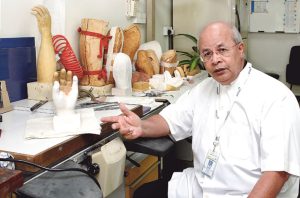
For people who have suffered the devastating loss of a limb to those who have undergone traumatic accidents that have altered their appearance, anaplastology has been a source of hope and rejuvenation. In the hands of skilled practitioners, the process of anaplastology is nothing short of magic. A prosthetic ear, nose, or limb is not simply a replacement for what has been lost, but rather a work of art that seamlessly blends into the individual’s body, giving them a renewed sense of confidence and self-esteem.
Anaplastology has also been used to help people with congenital conditions or birth defects. For example, anaplastologists can create a prosthetic ear for someone who was born without an ear or who lost their ear due to injury or disease. This can help to improve their quality of life and allow them to feel more confident in social situations.
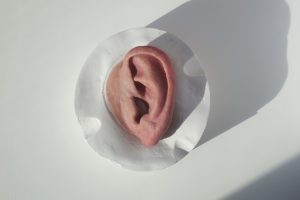
Anaplastology is not only about creating prosthetics that look and function like natural body parts. It is also about helping people to feel whole again after a traumatic event or illness. It is about restoring their sense of identity and allowing them to feel like themselves again. Anaplastology is truly an art form that has the power to heal and transform people’s lives.
Anaplastology has also been used as a tool for social change in India. In a country where stigma and discrimination against individuals with disabilities are rampant, anaplastology has been a beacon of hope for many. By helping individuals with disabilities regain their sense of dignity and pride, anaplastology is slowly breaking down the walls of prejudice that have plagued Indian society for far too long.
One of the challenges in anaplastology is to create prosthetics that not only look realistic but also function effectively. For example, prosthetic limbs need to be able to move in a natural way, prosthetic fingers need to be able to bend and grip objects and prosthetic eyes need to be able to move and blink. Anaplastologists need to have a deep understanding of human anatomy and physiology to be able to create prosthetics that meet these functional requirements.
Anaplastologists also need to be skilled in communication and empathy. They need to be able to work closely with their patients, listening to their needs and concerns, and helping them to feel comfortable and confident throughout the process. Creating a prosthetic is a collaborative effort between the anaplastologist and the patient, with the patient’s input and feedback being critical to the success of the final product.
Anaplastology has the potential to change people’s lives in profound ways. For example, for people who have lost an eye due to injury or disease, anaplastologists can create a prosthetic eye that looks and moves like a natural eye. This can help to improve their self-esteem and confidence, and can also improve their ability to function in everyday life. Similarly, for people who have lost a limb, a prosthetic limb can help them to regain their independence and mobility.
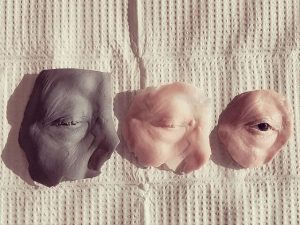
Anaplastology has come a long way in recent years, thanks to advances in technology and the increasing recognition of its importance in the medical field. For example, 3D printing technology has revolutionized the process of creating prosthetics, allowing for much more precise and customizable designs. Anaplastologists can now scan a patient’s body using advanced imaging techniques and create a prosthetic that fits their body perfectly.
Another area of innovation in anaplastology is the use of virtual reality technology. Virtual reality allows patients to see and experience what their prosthetic will look and feel like before it is created. This can help to reduce anxiety and improve the overall experience for patients.
Anaplastology is a testament to the power of art and science to create positive change in the world. As technology continues to advance, and more people become aware of the possibilities of anaplastology, we can only hope that this innovative and intricate medical art form will continue to thrive and provide hope to those in need.

